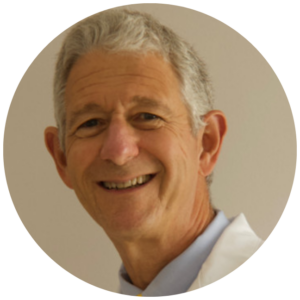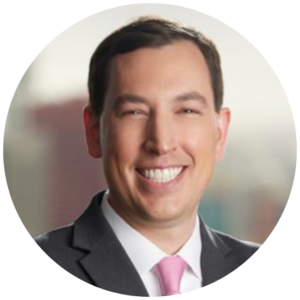Locums CME is a bi-weekly roundup of recent news that matters to locum tenens providers. Stay in the loop on what’s new in the locums industry, and make the most of the locum tenens lifestyle with our fresh finds.
Over 40% of US Physicians Consider Reducing Work Hours, Which Would Have Widespread Impact
Dec. 6, 2023
New research published in Mayo Clinic Proceedings showed a significant shift in physician working patterns. A survey of over 1,300 doctors revealed 40.3% are considering reducing their clinical work hours in the next 12 months. The change was a notable increase from 19.8% in 2014 and 16.1% in 2011. Also, their research showed that 25.6% of physicians say they might leave their practice within 24 months.
These doctors said the decision comes from the burnout they’ve experienced in recent years, saying it’s led to emotional exhaustion and depersonalization. The Mayo Clinic study showed that higher levels of emotional exhaustion significantly increased the likelihood of physicians wanting to reduce their work hours or leave their positions altogether.
Considering the physician shortage in the US, this is a trend that admins have to look to reverse because the intent to leave is often a reliable predictor of actual departures from the medical profession; the study indicated that 25-35% of physicians who plan to leave typically do so, and that’s compared to only 4-8% of those without such intent.
Some other interesting takeaways:
- Over 3% of physicians are considering leaving medicine entirely for different careers.
- If even 30% of these physicians act on their intentions, it could lead to a 1% decrease in the US physician workforce.
- Similarly, if 30% of those planning to reduce clinical hours do so by 10%, it would result in an additional 1.2% reduction.
The potential impact of these trends is significant. A 2.2% reduction in the physician workforce would mean a loss of approximately 20,234 doctors, equivalent to the entire 2022 US medical school graduating class.
For more on why many US physicians contemplate reducing their clinical hours or leaving the practice altogether, check out the full article from the American Medical Association.
Your Locums Prescription
All Star: The Flexibility and Benefits of a Career in Locum Tenens
Dec. 14, 2023
Physicians may still be on the fence about pursuing those locums opportunities in 2024. But before shelving the idea altogether, take the time to research some of the great benefits of a locum tenens career.
All Star Healthcare Solutions recently packaged these benefits into an article, highlighting five of the most common benefits, which include:
1. Flexibility with Scheduling: Locum tenens professionals have control over their work schedules, allowing them to choose when to accept assignments and take time off. Being open to flexible dates and contract lengths can broaden opportunities, including working during high-demand times like holidays, to promote work-life balance and prevent burnout.
2. Flexibility with Income Potential: The pay rates for locum tenens positions are typically based on regional healthcare rates, but facilities may offer bonuses or increased rates for urgent needs. Discussing financial parameters with consultants and maintaining flexibility in income expectations is advised.
3. Flexibility with Locations: Locum tenens providers can specify preferred practice locations, and recruiters aim to match assignments accordingly. However, staying open to new places can lead to discovering new communities to live and work in temporarily.
4. Flexibility with Facility Type and Size: Diverse clinical settings and shift options are available in locum tenens, increasing the chances of finding opportunities in desired cities. Adaptability to different healthcare facilities, such as clinics or outpatient centers, can create more job prospects.
5. Flexibility with Locum Tenens Goals: Locum tenens offers versatility in career goals. Locums providers can gain experience in various settings, supplement income, or transition into retirement. Communicating your changing goals with recruiters helps them tailor each assignment to your preferences.
For those healthcare providers looking for more details on these benefits and personalized guidance, read the full article to learn more.
Hayes: Retired Physician Looks at Benefits of Locum Tenens
Dec. 3, 2023
Dr. William McCord, a retired physician, shared his experience in locum tenens work as a retired doctor in an article from Hayes Locums. He says he decided to pursue locums because retirement had become monotonous, and he missed the problem-solving and patient-interaction aspects of medicine.

After his first assignment, Dr. McCord says he discovered the joy of staying clinically active through locum tenens. It helped him stay up to date on medical advancements and helped him keep his mind sharp. He also valued meeting new people, teaching medical students, and experiencing new medical environments.
For other rheumatologists considering locum tenens, Dr. McCord suggests it’s a viable option if they are also looking for greater flexibility in work hours and destinations, especially if they don’t have any young children or their family is willing to travel.
Locum tenens allows retired doctors to maintain their medical skills, explore new destinations, and adapt their work to their lifestyle. To learn more about locum tenens opportunities for retired doctors, read the full article for insights into the benefits of a locum tenens career.
8 Compelling Reasons Why Nurse Practitioners Are Choosing Locum Tenens
Dec. 12, 2023
Nurse practitioners (NPs) are exploring new avenues for career growth, and the option gaining traction among NPs is locum tenens. Here are eight reasons, according to Weatherby Healthcare, why it’s worth considering if you haven’t:
1. Focus on the Patient: Working as a locum tenens NP allows you to prioritize patient care without the administrative red tape that often hinders clinical work.
2. Gain Clinical Knowledge: NPs in locum tenens roles experience diverse clinical settings, offering exposure to novel treatment methods and enhancing professional skills.
3. Give Back and Provide Mentorship: Seasoned NPs can share their expertise while on locum assignments, extending mentorship to younger colleagues and contributing to the growth of healthcare facilities.
4. Avoid Burnout: The flexibility of locum tenens enables NPs to escape systemic burdens, opt for manageable workloads, and maintain a healthy work-life balance.
5. Take Control of Your Workload: With locum tenens, NPs can choose where, when, and how much they work, affording them the flexibility to meet personal needs and desires.
6. Enjoy More Opportunities to Relax: Locum tenens provides the freedom to manage one’s schedule, opening doors to quality time with family, hobbies, and personal exploration.
7. More Income: Whether as a supplement or full-time endeavor, locum tenens offers the potential for higher earnings, financial security, and achieving personal goals.
8. Receive Employee Benefits: Some agencies offer NPs W-2 employment status with benefits such as healthcare and a 401(k), streamlining financial matters.
If you’re an NP reading this intrigued by the locums options, this is a good glimpse into why nurse practitioners turn to locum tenens to shape their careers. For more insights, read the full article from Weatherby Healthcare and discover how this option can empower your professional journey.
The Locum Tenens Guy Offers Monthly Masterclass and Personalized Guidance for New Providers
Jan. 1, 2024
The Locum Tenens Guy, Dr. Vlad Dzhashi, recently announced he’s offering new monthly office hours to take questions from current locums providers and those interested in pursuing locums in the New Year.

The sessions will allow new or practicing providers to access all the trade secrets and insider tips they can use to help build on their careers. The sessions will be intimate and immersive, so Dr. Dzhashi is opening the class to only 10 people.
Claim your spot at this link here.
‘The Locum Life’ Author on Locum Tenens, Side Gigs, and The Potential to Revitalize a Provider’s Career
Jan. 6, 2024
In a recent episode of the “Evolvepreneur (After Hours) Show,” Dr. Andrew Wilner, a long-time locum provider, medical journalist, and author, discusses the benefits of locum tenens work for physicians.

Wilner stresses the importance of having financial savings as a safety net when embarking on side projects, as success can take time, and unforeseen expenses arise. He mentions the value of support from loved ones in staying motivated during the challenges of pursuing side gigs. He also emphasizes valuing expertise from one’s primary career to avoid frustration in side gig pursuits.
This episode provides valuable insights for healthcare providers looking to maintain work-life balance and passion in their careers through temporary opportunities or side projects.
To explore these concepts, listen to the full podcast episode on the Evolvepreneur (After Hours) Show.
Locum Leaders
Barton Leader Talks How Locum Tenens Can Combat Surgeon Deficits
Nov. 29, 2023
Barton Associates’ Executive Vice President, Lina Gallotto, recently presented at the American College of Surgeons Clinical Congress, addressing the issue of surgeon shortage. Gallotto’s presentation emphasized forecasts from Staffing Industry Analysts, estimating a deficit of 15,800 to 30,200 non-primary care surgeons by 2034. Gallotto highlighted that the locum tenens staffing industry, projected to grow by 7% in 2024, can effectively provide skilled surgeons on a temporary basis to understaffed medical facilities.

Facilities partnering with staffing agencies gain access to a network of locum tenens physicians, nurse practitioners, and physician assistants willing to travel nationwide for temporary assignments.
The healthcare staffing shortage isn’t limited to surgeons — the Association of American Medical Colleges projects a shortage of up to 124,000 primary care and non-primary care physicians by 2034. Still, locum tenens can drastically impact primary care and surgeon staffing issues. To look deeper into the surgical staffing solutions of Barton Associates, view their website or read the full article on Yahoo! Finance about the discussion with Gallotto.
Physician Wellness Retreat
Kaiser Permanente Peer Outreach Support Program Looks to Revolutionize Burnout Management in Hospitals
Dec. 6, 2023
A recent study conducted at Kaiser Permanente Northern California (KPNC) hospitals highlights the effectiveness of peer support programs in addressing physician burnout and promoting a supportive culture within medical departments.
In a study titled “Implementation and effectiveness of a physician-focused peer support program,” Peer Outreach Support Team (POST) program first trained “peer supporters” to understand burnout, recognize red flags, and provide support, allowing physicians to refer their peers to the program. Between June 2019 and May 2022, POST trained 59 peer supporters in 11 different departments, which the study says benefits more than 500 physicians.
Nearly half of physician survey respondents in five departments reported successful peer interactions, which they say resulted in improved well-being, reduced negative emotions, decreased stigma, and positive cultural changes.
The study’s lead author, Dr. Dana Sax, an emergency physician at The Permanente Medical Group, emphasized the importance of peer support from colleagues who share the same work environment and challenges. The program’s success led to its expansion to 10 additional KPNC hospitals, with three more intending to implement it.
Over 85% of survey respondents expressed their willingness to recommend POST to other departments, believing it could positively impact the culture of medicine. Read more about the study in this article from Medical Economics.
Breaking the Burnout Cycle: Strategies to Help Women Physicians Achieve Work-Life Balance
Dec. 5, 2023
Women physicians face numerous challenges in the healthcare industry, including gender and maternal discrimination, inflexible schedules impacting child care, pay inequity, and increased Electronic Health Record (EHR) demands.

A recent survey by the AMA revealed 57% of female physicians reported at least one symptom of burnout, compared to 47% of male physicians. However, burnout isn’t solely a personal resilience issue. Systemic changes are needed to address burnout and enhance well-being.
Individual women physicians can take steps to combat burnout by:
- Building relationships and proposing solutions within their practices.
- Clearly communicating their professional needs.
- Monitor EHR use to decrease “note bloat” and advocate for work-life integration can reduce EHR-related stress.
- Seeking peer support within the medical community to help women physicians navigate everyday stressors and achieve work-life balance.
Read more from the American Medical Association for strategies to combat burnout and improve work-life balance for women physicians.
Doctor’s Notes
Medscape Report Shows Female Physicians Average Compensation Reaches $300K
Dec. 6, 2023
Medscape’s recently published “Female Physician Wealth & Debt Report” revealed that the average compensation for female physicians in 2023 reached $300,000. Specialists earn an even higher average of $327,000, while primary care providers are at $239,000, the report says.
The report also highlights the persistent gender gap in physician compensation, with an overall disparity of 29% between male and female physicians. When broken down, this gender pay gap is 20% for primary care providers and 27% for specialists.
While these disparities are substantial, there has been some progress since Medscape’s 2019 report, where the gender pay gap was 25% for primary care providers and 33% for specialists. The report also shows us:
- 31% of female physicians have a net worth of $500,000.
- Approximately 25% have a net worth ranging from $2 million to $5 million.
- However, only 6% of female physicians have a net worth exceeding $5 million, with 19% falling between $500,000 and $999,999 and an additional 19% between $1 million and $1,999,999.
For those interested in these developments in female physician compensation and gender pay disparities, see the article from Becker’s ASC.
Rising Physician Shortage Leads to Increased Patient Distrust in Healthcare
Dec. 22, 2023
According to an article from NPR, a growing shortage of healthcare providers has led to more distrust in the American medical system. They said that patient distrust can extend reluctance, which means high-risk patients who need care or need to receive vaccinations like COVID-19 and flu shots end up not getting treatment.
The American Medical Association’s president, Dr. Jesse M. Ehrenfeld, previously declared the physician shortage a public health crisis, affecting all areas of the country and impacting families with high needs and limited means.
The NPR article focuses on federally qualified health centers (FQHCs), which provide comprehensive services from dental care to mental health and specialty care and are often a valuable safety net in these communities. FQHCs are experiencing continued workforce shortages. Over 67% of FQHCs reported losing 5-25% of their workforce in six months in 2022, and 15% of FQHCs had 25-50% attrition rates. Nurses are facing some of the most severe shortages. These shortages burden support staff, increasing their workload and responsibilities.
The crisis is leading to a shift in healthcare utilization patterns. Access to fewer primary care doctors directly leads to more patients visiting urgent care for primary care issues due to difficulty securing appointments. These scenarios indicate that many people no longer have a regular source of care.
As the patient-provider relationship deteriorates, patient trust in healthcare providers is waning. Patients are becoming frustrated with the inefficiency, and when they feel forced to turn to hospital emergency rooms for primary care needs, it further strains the healthcare system and its workforce. For more on this issue and its implications, read the full article from NPR here.
Unpacking the Impact of Physicians’ After-Hours ‘Pajama Time’ Inbox Management
Dec. 26, 2023
Over the last decade, physicians have increasingly grappled with a surge in unpaid workloads, notably managing electronic inboxes and health records, a trend that intensified during the pandemic. This “pajama time” often stretches beyond clinic hours, eating into nights and weekends. Dr. Lisa S. Rotenstein’s study, featured in the Journal of General Internal Medicine, examines the value of this inbox labor for patient care. The study, involving 133 primary care physicians, found a clear link between time spent on electronic correspondence and patients’ likelihood to recommend their doctors, with female physicians receiving significantly more patient messages.

The study’s findings help us better understand the dynamics of physician burnout. While the growing burden of electronic communications contributes to burnout, reducing time spent in inboxes isn’t necessarily the solution. Female primary care physicians, in particular, find significant value in these interactions, with electronic communication becoming an expected part of patient care.
Dr. Rotenstein advocates for rethinking the approach to managing electronic inbox communications. She suggests delegating specific tasks to other patient care team members and setting clear expectations within healthcare organizations. Recognizing and compensating physicians for the time spent on electronic communications as part of patient care is also crucial. For a deeper dive into this topic, the full article from the American Medical Association offers extensive insights into Dr. Rotenstein’s study.
DEA Extends Telehealth Prescribing Flexibility for Controlled Substances to 2024
Nov. 1, 2023
The Drug Enforcement Administration (DEA) has extended the flexibility for physicians to prescribe controlled substances based on telehealth patient visits until December 31, 2024. The DEA’s extension acknowledges that patients face challenges in securing and traveling to in-person appointments, particularly for the medications used in opioid-use disorder treatment. Dr. Jesse M. Ehrenfeld, president of the American Medical Association (AMA), expressed his gratitude for the DEA decision, emphasizing the importance of ensuring continued access to evidence-based care.
During a recent DEA listening session, Dr. Ehrenfeld advocated for federal policies that support prescribing controlled substances through telehealth, urging the DEA to avoid creating new barriers that might hinder patient access. He emphasized the need for an appropriate balance between in-person and virtual services to meet patients’ needs while ensuring patient safety, aligning with the AMA’s Recovery Plan for America’s Physicians.
The importance of this extension lies in the demonstrated benefits of telemedicine for prescribing controlled substances, especially during the COVID-19 pandemic. Studies have shown that telehealth-based treatment for opioid-use disorder resulted in a 33% lower risk of fatal overdose compared to no medication treatment. Additionally, it has allowed patients to initiate opioid-use disorder treatment without the delays associated with in-person visits, addressing barriers like transportation and child care.
Dr. Ehrenfeld emphasized physicians, whether providing care via audio-only, audiovisual, or in-person methods, prioritize high-quality, evidence-based care with thorough assessments and sound decision-making. State laws and the Controlled Substances Act already provide safeguards to ensure patient safety and prevent diversion. The AMA has actively advocated for telemedicine-based prescribing of buprenorphine and controlled substances, receiving support from senators who recognize its benefits.
In light of the evolving opioid epidemic, the AMA stressed the importance of science, evidence, and compassion in guiding patient care and policy change. For further resources and data related to addressing substance-use disorders and chronic pain, visit the AMA’s “End the Epidemic” website. Read the full article on the DEA’s decision here.









